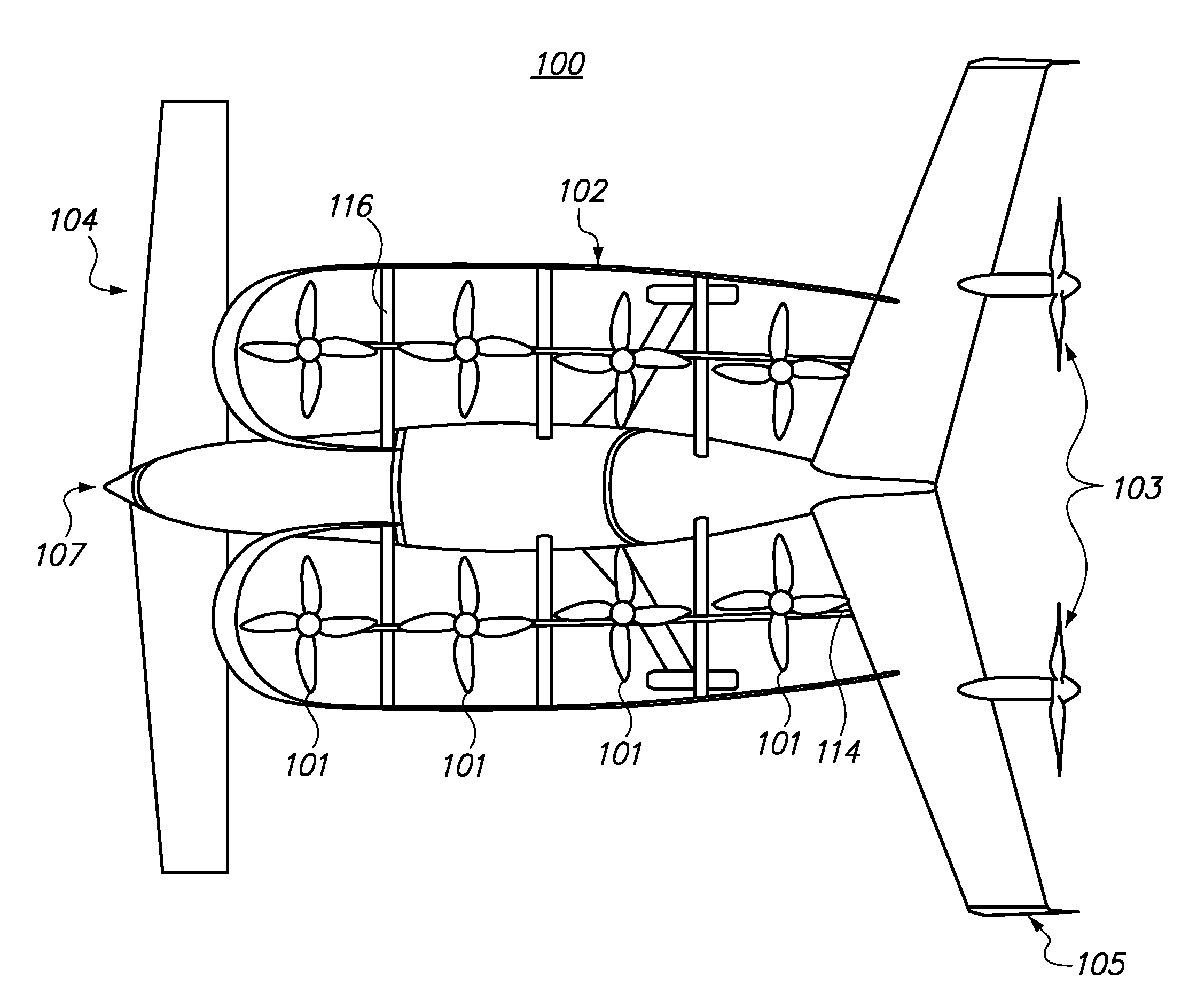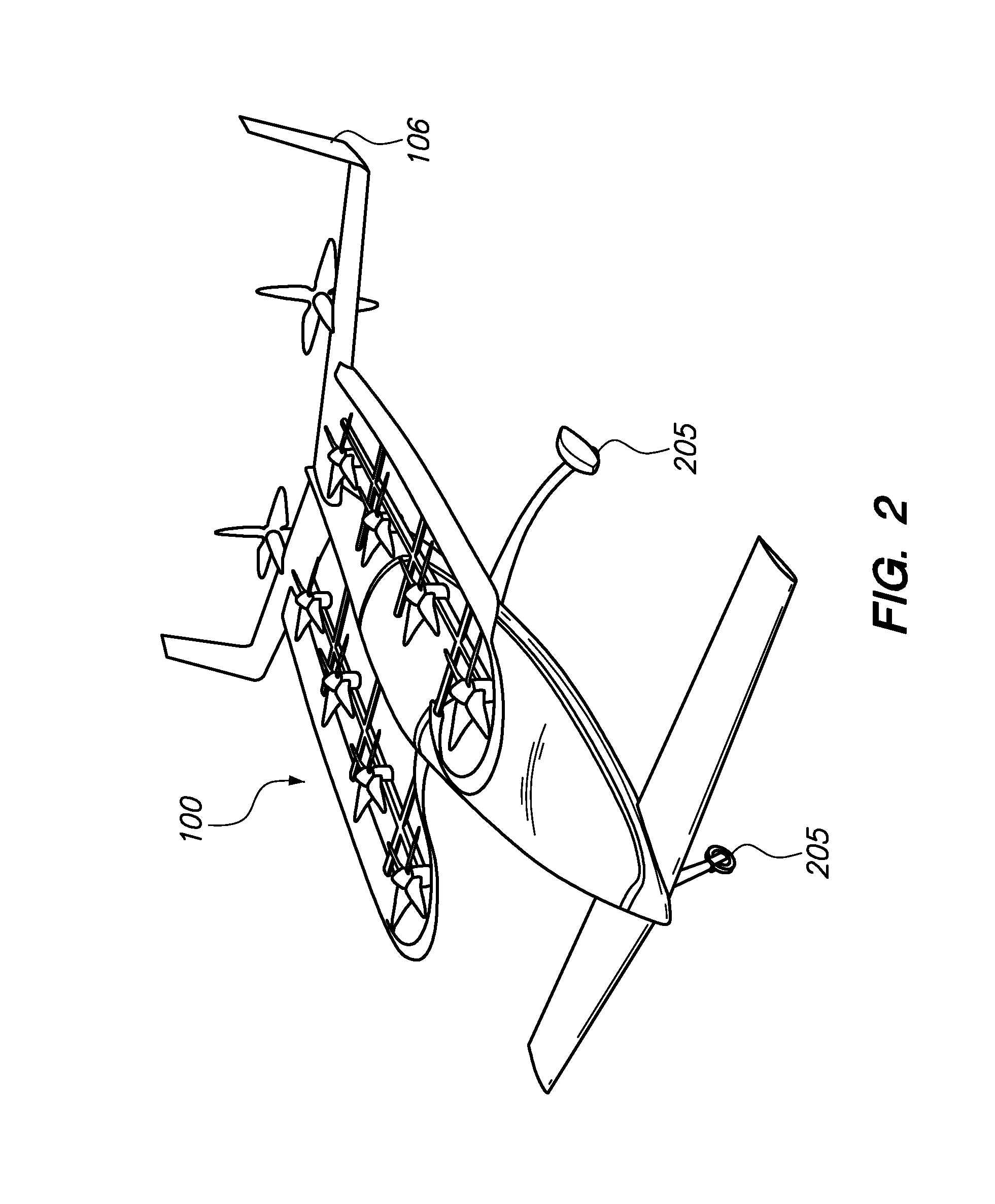Personal aircraft
a personal aircraft and rotor technology, applied in the field of personal aircraft, can solve the problems of requiring maintenance, rotors are typically quite complex, and utilize mechanically complex systems to control both the collective and cyclic blade angles, etc., and achieves the effects of convenient control, high compactness, and safety. and quiet and efficien
- Summary
- Abstract
- Description
- Claims
- Application Information
AI Technical Summary
Benefits of technology
Problems solved by technology
Method used
Image
Examples
Embodiment Construction
[0018]FIG. 1 illustrates a personal aircraft 100 in accordance with one embodiment. Aircraft 100 includes vertical lift rotors 101; forward flight propellers 103; a forward wing 104; a rear wing 105 having winglets 106; protective shroud 102 (also known as a fence); and a fuselage 107. Fuselage 107 also includes landing gear and power source (not shown). FIG. 2 illustrates a second view of personal aircraft 100, including port-side main landing gear and nose landing gear 205. FIG. 3 illustrates a front view of personal aircraft 100, in which port landing gear, starboard landing gear and nose gear 205 are visible. FIG. 4 illustrates a view of the left (port) side of aircraft 100 in accordance with one embodiment.
[0019]In various embodiments, aircraft 100 is sized to accommodate a single pilot and personal cargo. For example, in various embodiments the length of the aircraft from nose to its aft-most surface is between 15 and 20 feet, and its wingspan is between 15 and 20 feet. In alt...
PUM
 Login to View More
Login to View More Abstract
Description
Claims
Application Information
 Login to View More
Login to View More - R&D
- Intellectual Property
- Life Sciences
- Materials
- Tech Scout
- Unparalleled Data Quality
- Higher Quality Content
- 60% Fewer Hallucinations
Browse by: Latest US Patents, China's latest patents, Technical Efficacy Thesaurus, Application Domain, Technology Topic, Popular Technical Reports.
© 2025 PatSnap. All rights reserved.Legal|Privacy policy|Modern Slavery Act Transparency Statement|Sitemap|About US| Contact US: help@patsnap.com



